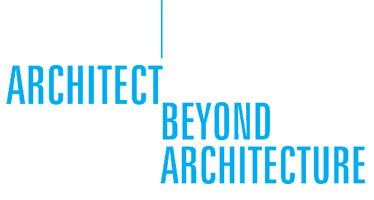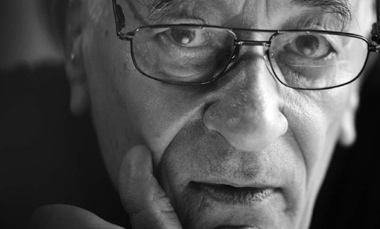
 |
|
|---|---|
He was born on 31st August 1928 in Warsaw. He studied at the Sculpture
Faculty of the Academy of Fine Arts in Krakow (1949–50) and the
Faculty of Architecture at the Krakow University of Technology
(1949–52). He obtained a diploma in architecture in 1954. A year later
Wojciech Plewiński became a candidate for the membership of the
Association of Polish Artists Photographers (ZPAF). He has been a full
member of ZPAF since 1957. In 1950–56 he worked at the Studio of
Monuments’ Conservation taking inventory of the dilapidated historic
buildings in Małopolska. In 1956–59 he worked as a photographer at the Research Institue of Animal Production (with Włodzimierz Puchalski). He has collaborated with numerous publishing establishments, among them “Tygodnik Powszechny” [famed independent Catholic weekly]. Since 1957, for 40 years, Wojciech Plewiński was employed by the “Przekrój” weekly magazine where he made fashion, portait, nature and documentary photographs. The 500 covers with portraits of women photographed by the artist became a trademark of the magazine. In the years 1965–68 he created a series of nude photos Przenikania / Permeations and Lustra / Mirrors. A special place in Wojciech Plewiński’s carreer has been occupied by the theatre – since 1959. At that time he photographed the performances of the Rhapsodic Theatre and took up collaboration with the Juliusz Słowacki Theatre and the Stary Theatre in Krakow. He created a photographic record of almost all the plays, some of them legendary, directed by Lidia Zamkow, Konrad Swinarski, Andrzej Wajda, Jerzy Jarocki, Zygmunt Hubner, Józef Szajna, Jerzy Grzegorzewski, Krystian Lupa. He also worked for many other stages all over Poland: STU and Ludowy Theatres in Krakow, Studio and the National Theatre in Warsaw, Polish and Contemporary Theatres in Wrocław as well as stages in Katowice, Chorzów, Tarnów, Bielsko, Łódż, Zakopane. Wojciech Plewiński took part in many solo and group exhibitions in Poland and abroad including: Hong Kong, Holland, Germany, Austria, Greece, France, Great Britain, Yugoslavia, Mexico, Sweden, Italy, the USSR, Czechoslovakia. He has been awarded prizes in many competitions and exhibitions, including: the first awards of the ZPAF in 1957–74; the first prize for the Press Photo (Warsaw, 1958); the first prize at the exhibition of Art Photography of Sculpture (Gdańsk, 1967); Gold Medals for the Theatre Photography (Novi Sad, Yugoslavia, 1968 and 1971); medals in Monte Carlo and Madrid (1969); the first prize for the photographic coverage of the visit of Pope John Paul II in Poland (1979). His photographs are presented at the collections of the Museum of Modern Art in Łódż, the National Museum in Wrocław, the Stary Theatre Museum. He is a member of the FIAP (Federation Internationale de l’Art Photographique) AIE. After the turmoil of war, having changed my address many times, I found myself in Krakow with the idea to study. My choice was sculpture at the Academy of Fine Arts or architecture. I was admitted to sculpture and I spent the year 1948-49 studying there. Next, I attempted at studying both sculpture and architecture but this of course proved impossible. So I finally stayed at the Faculty of Archi te cture at the Krakow University of Technology and graduated in 1954 with the diploma of an engineer. I did not stand a chance of getting a master’s degree because I „did not belong” – was not a member of the communist party –and I was not a very diligent student, my way of dressing and my hair were “improper” and generally did not fit the norm of the student at those times... Working in an office did not appeal to me as it required job assignments, discipline, design norms of all sorts and endless debilitating machine-like treatment of staff. I chose to do my student training at the Studios of Conservation of Monuments. It was there that I got my first work as a student. Those were the days… but they deserve a separate memoir. Looking back I consider this period to be very formative because of the contact with splendid though delapidated historic architectural structures, paintings, sculpture, handcraft as well as with outstanding personalities and colleagues from the Faculty. There, at the precincts of the Palace of the Jordan Family at the Krakow’s Kazimierz I met amongst others Wacek Nowak, Stefan Szlachtycz, Bogdan Paczowski, Janusz Smólski, Staszek Kasprzysiak. It was with Wacek Nowak that we decided, as he put it to “fly the flag of freedom”, give up our jobs and take the risk of living of photography as freelancers. And so we did. However, the only thing is that I did get a job soon at the “Przekroj” weekly magazine where Marian Eile after seeing my photographs and an interview, decided to take me on the editorial staff. I remeber the number of my pass was 25! All these decisions determined my future and that of my family and a series of sheer coincidences made me do what I did when and where... What kind of place was “Przekroj” – it goes without saying. It was an opinion maker of all social groups and of many countries , especially those on the Eastern side of the Iron Curtain. It had an important share in spreading “cosmopolitan culture” ideas, within limits , of course. My role at the weekly was a humble one; I had to supply the editor with the photographs. The covers were the most crucial because they “sold” the magazine. Therefore I became a “face hunter” taking photos of young women. This aspect of my job stuck with me for many years. I did almost everything – documentaries, portraits for interviews, fashion, ads, nature and theatre. The theatrical period lasted for many years . It was a time of prosperity with many outstanding and famous theatre directors working in Poland. In the late 1950s qnd 1960s I and my fellow architects Zbigniew Łagocki and Wacław Nowak formed an informal art group based on common passions, social life and studies. The present – after the photography has gone digital – has forced me to make electronic files of my archive of negatives, so I am forced to digitilize my analogue works. To my surprise this work, scanning and digitilizing my own old photographs, has proved to be an adventure and a delight in the possibility of reliving the history (not only my own), an opportunity to meet people, experience, travel, make documentation and so on. On the whole it has been a welcome bonus to the activities of my, alas, very mature age. Wojciech Plewiński Krakow, May 2010 More at www.plewinski.com |
 photo by Grażyna Makara |

Copyright by Konrad Glos, Rafal Zub 2010









